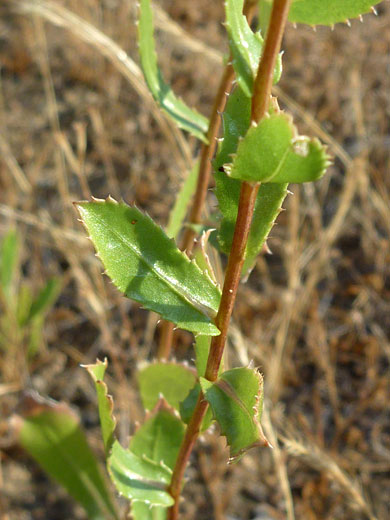Common name:
Great valley gumweed
Family:
Scientific name:
Grindelia camporum
Main flower color:
Range:
California, and small adjoining areas of Oregon and Nevada
Height:
Between 2 and 8 feet
Habitat:
Roadsides, sandy or salty flats, disturbed areas; up to 4,500 feet
Leaves:
Ovate to lanceolate, yellowish green, up to 6 inches long, usually with toothed edges
Season:
May to November
There are 27 grindella species in the US, all quite similar, but they can usually be identified by the phyllary characteristics, the habitat and the location. Phyllaries of grindelia camporum are flattened at the base but cylindrical above, and taper abruptly at the tip to a short spine. They are strongly bent outwards, not pressed against the involucre, and curved by up to 360 degrees. The bases of the phyllaries are light yellow-green, the tips darker green. The involucre is bell-shaped or hemispheric. Flowerheads have between 25 and 39 ray florets, about a third of an inch in length.
At flowering time, basal leaves are usually withered leaving just the alternate stem leaves. These have a smooth, waxy or resinous surface, serrate edges, and (often) clasping bases. Stems are erect and freely branching.
At flowering time, basal leaves are usually withered leaving just the alternate stem leaves. These have a smooth, waxy or resinous surface, serrate edges, and (often) clasping bases. Stems are erect and freely branching.
All Contents © Copyright The American Southwest | Comments and Questions | Contribute | Site Map



